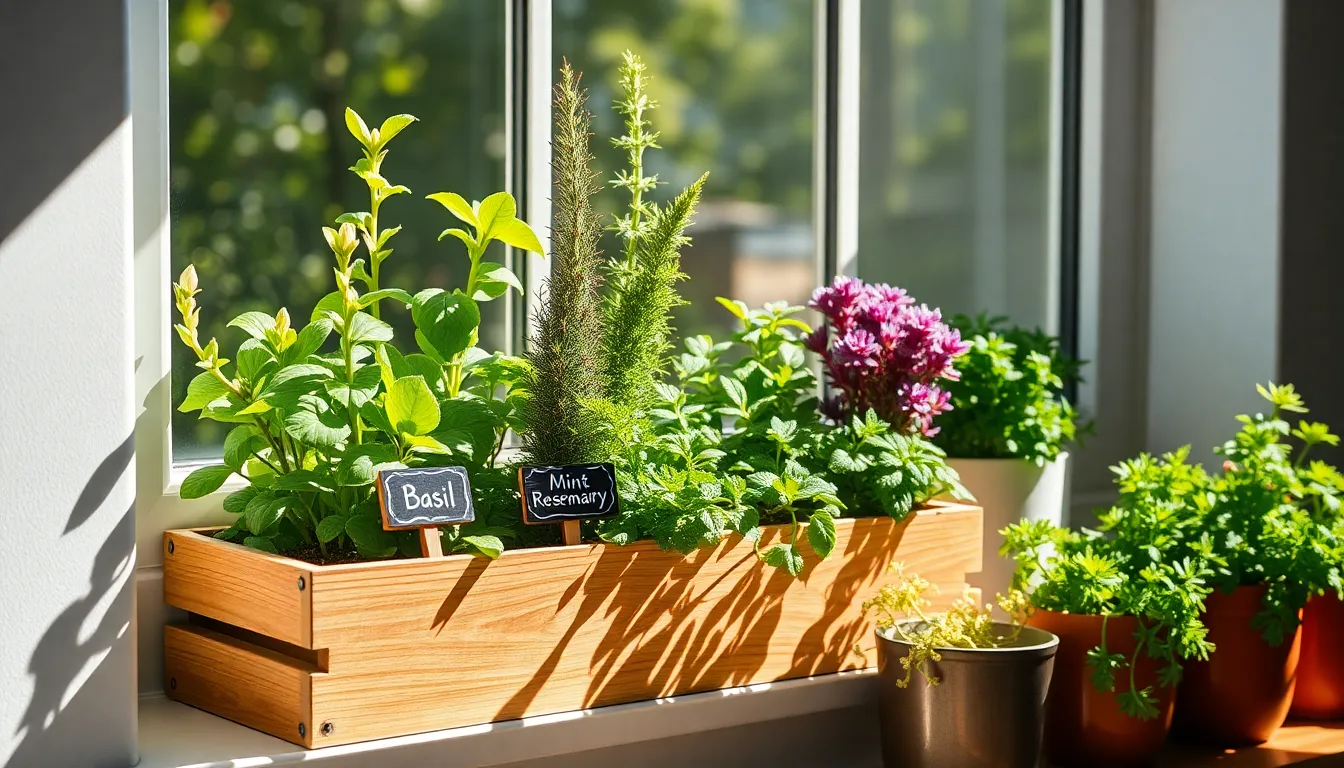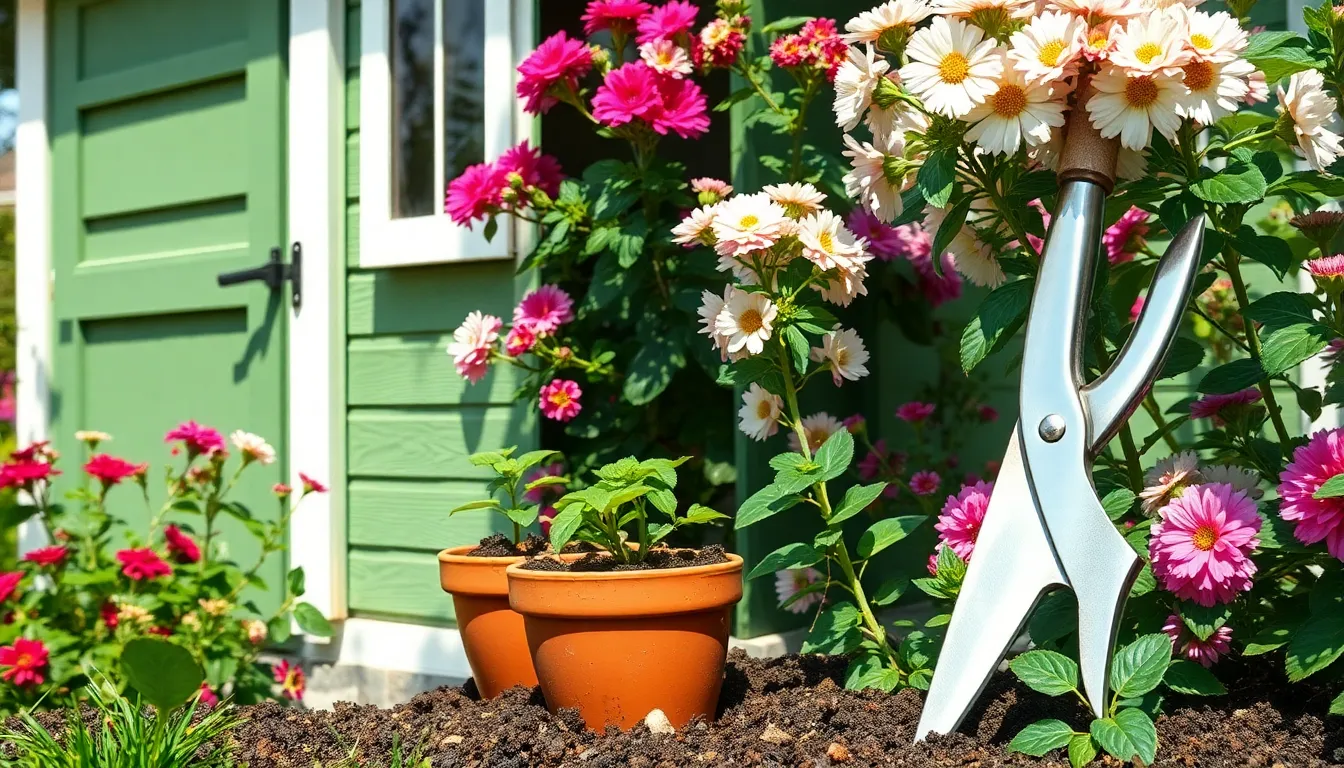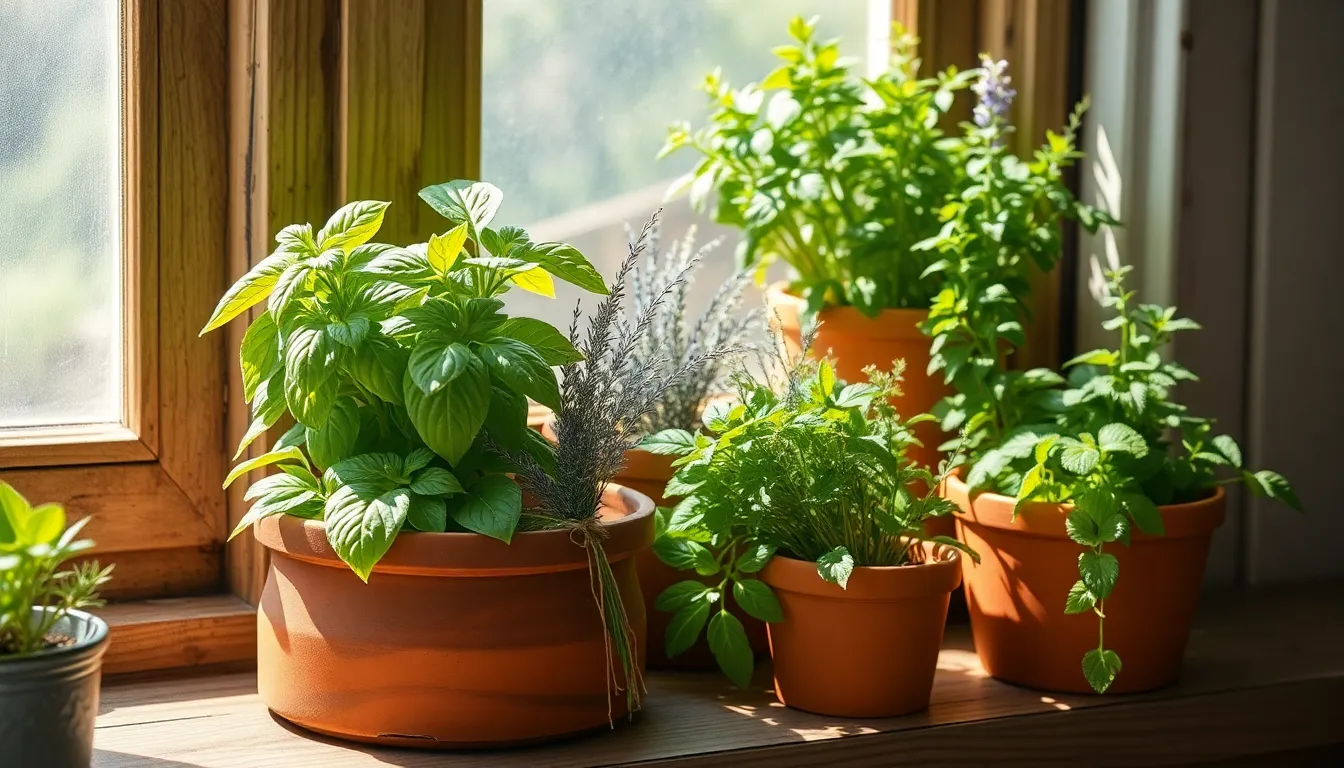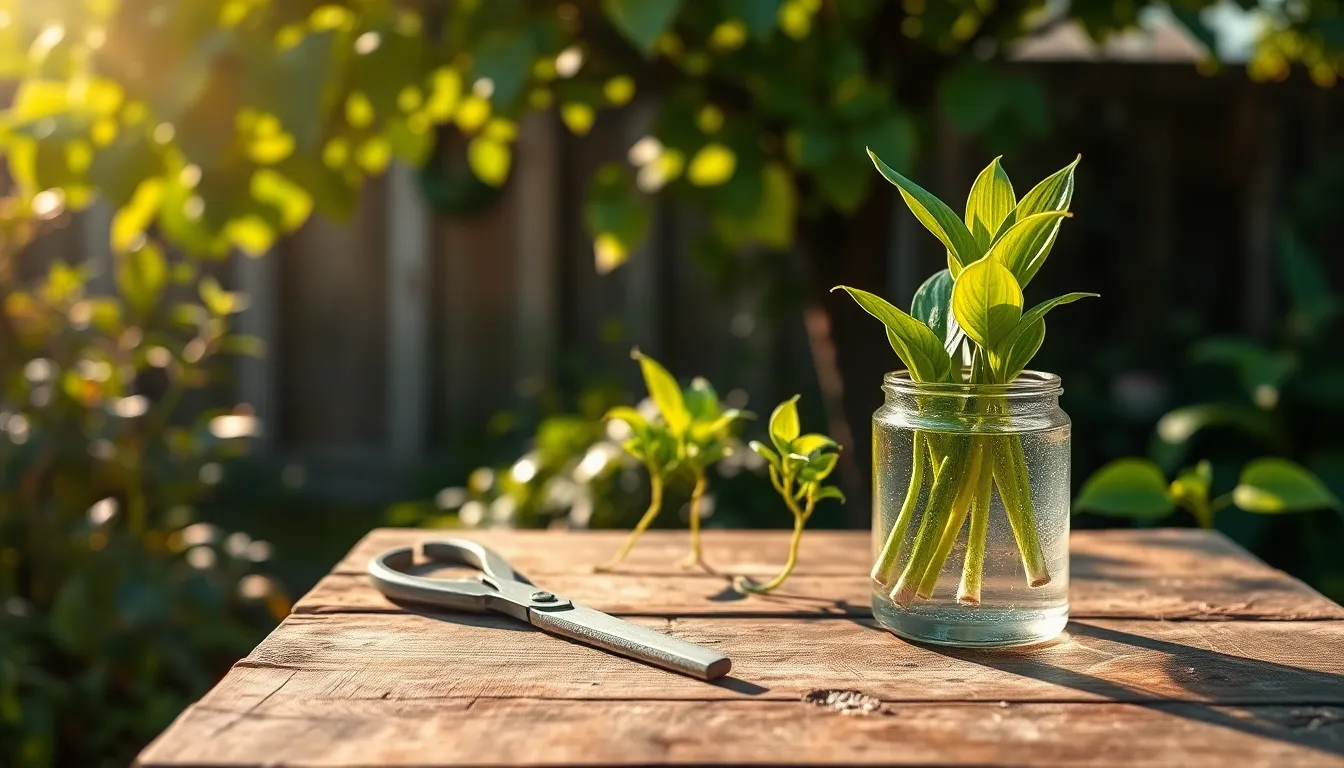Imagine stepping into your kitchen and plucking fresh basil or mint from a vibrant windowsill garden just a few steps away. Whether you’re a budding gardener or a seasoned plant enthusiast, cultivating herbs right in your home can transform your culinary adventures and add a touch of nature to your indoor space. Growing herbs on a windowsill is more than just an aesthetic choice; it’s an invitation to explore the delightful world of gardening without needing a sprawling backyard.
For beginners, the idea of starting a herb garden might seem daunting, but rest assured, it’s simpler than you think. With just a bit of sunlight, the right containers, and a sprinkle of care, you can nurture a thriving mini-garden that boasts both beauty and utility. Seasoned gardeners will appreciate the convenience and year-round access to fresh herbs, while those new to the gardening world will delight in watching their green thumb blossom.
In this article, we will guide you through the essentials of setting up your own windowsill herb garden, covering everything from selecting the right herbs to ensuring they flourish in your unique environment. You’ll discover tips on how to maintain optimal growing conditions, troubleshoot common issues, and even harvest your herbs for maximum flavor. By the end, you’ll be equipped with the knowledge and confidence to create a lush, aromatic oasis that enhances both your home and your culinary creations.
Select Suitable Herb Varieties
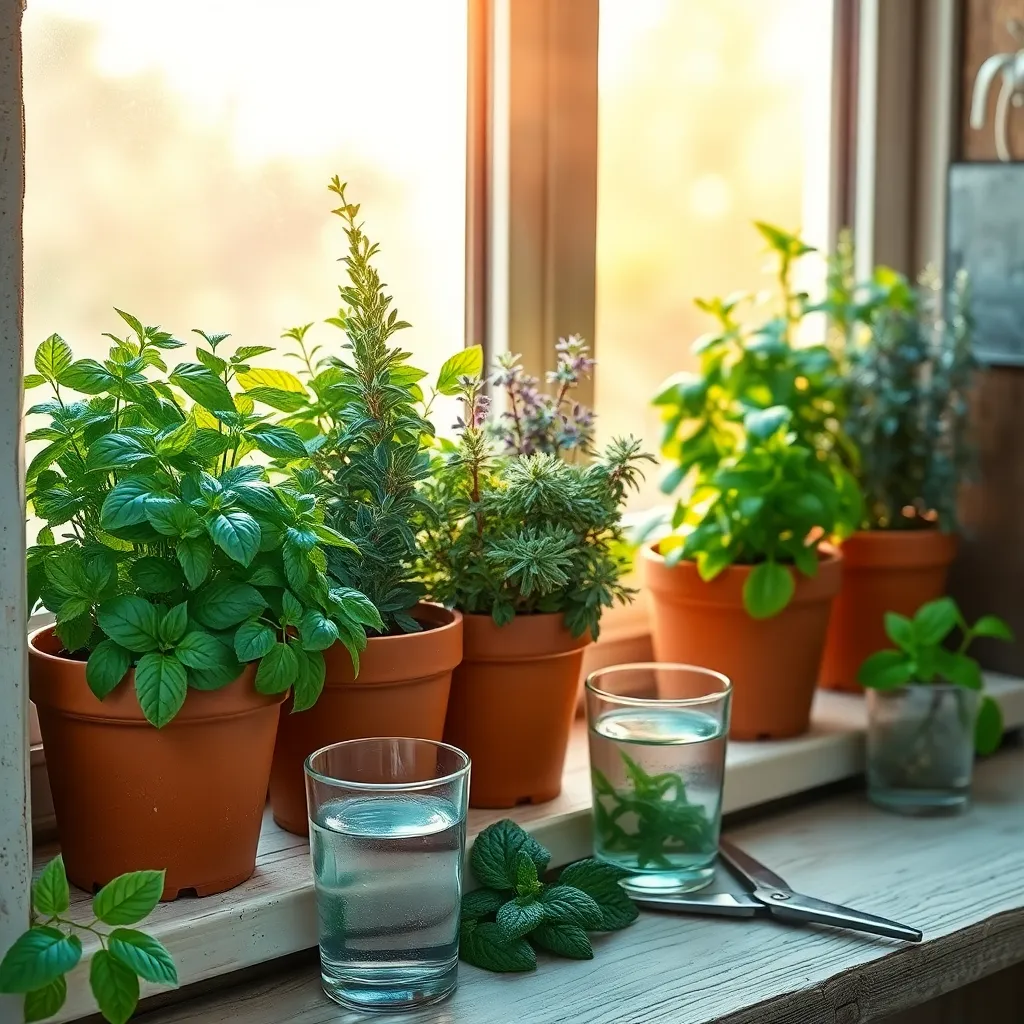
Selecting the right herbs for your windowsill garden is crucial for a successful growing experience. Consider herbs that thrive in indoor environments, such as basil, mint, and chives, which are known for their adaptability and ease of care.
Basil is an excellent choice as it requires 6-8 hours of sunlight and likes to be watered when the top inch of soil feels dry. Use a well-draining potting mix to prevent root rot, and pinch back the leaves regularly to encourage bushy growth.
Mint is a hardy herb that can tolerate less light and thrives in slightly moist soil, making it perfect for less sunny windowsills. Ensure your mint is planted in a separate pot as it can be invasive; use a container with drainage holes to avoid waterlogging.
Chives are another great option, known for their onion-like flavor and ability to grow in a variety of light conditions. They prefer a loamy soil and should be watered moderately, allowing the soil to dry slightly between waterings to prevent overwatering.
For advanced gardeners, consider experimenting with hydroponic systems for growing herbs indoors, which can optimize space and enhance growth rates. This method involves using a nutrient solution instead of soil, providing consistent access to nutrients and water.
Prepare Windowsill Containers
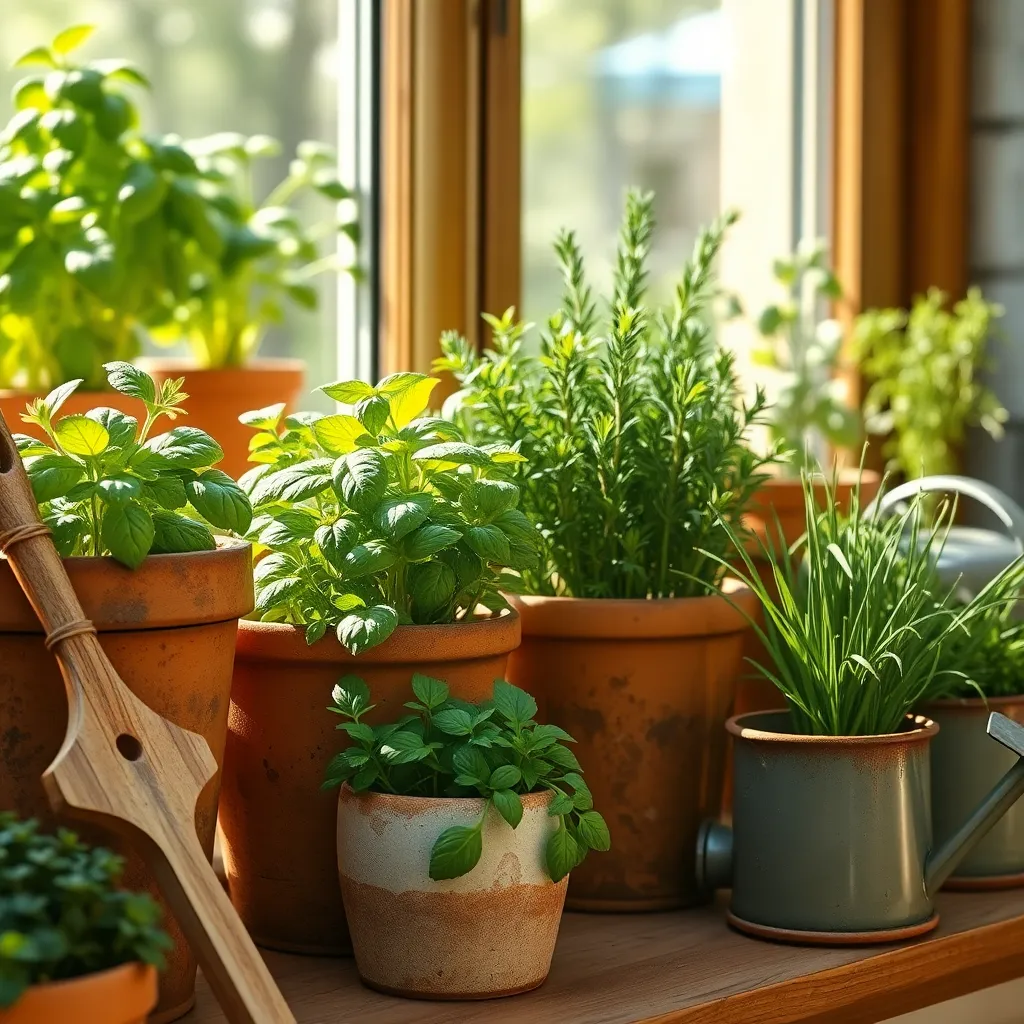
To start your windowsill herb garden, choose containers that are at least six inches deep to allow for root growth. Ensure each container has drainage holes to prevent waterlogging, which can lead to root rot.
Using a high-quality potting mix is crucial for healthy herb growth in containers. Opt for a well-draining soil mix with added perlite or sand to enhance aeration and drainage.
Before planting, consider lining the bottom of your containers with a layer of small stones or gravel. This extra step aids in drainage and helps prevent soil from clogging the drainage holes, promoting healthier root systems.
Position your containers on a windowsill that receives at least six hours of direct sunlight each day. If natural light is insufficient, supplement with a grow light to ensure your herbs receive the light they need to thrive.
Ensure Adequate Sunlight Exposure
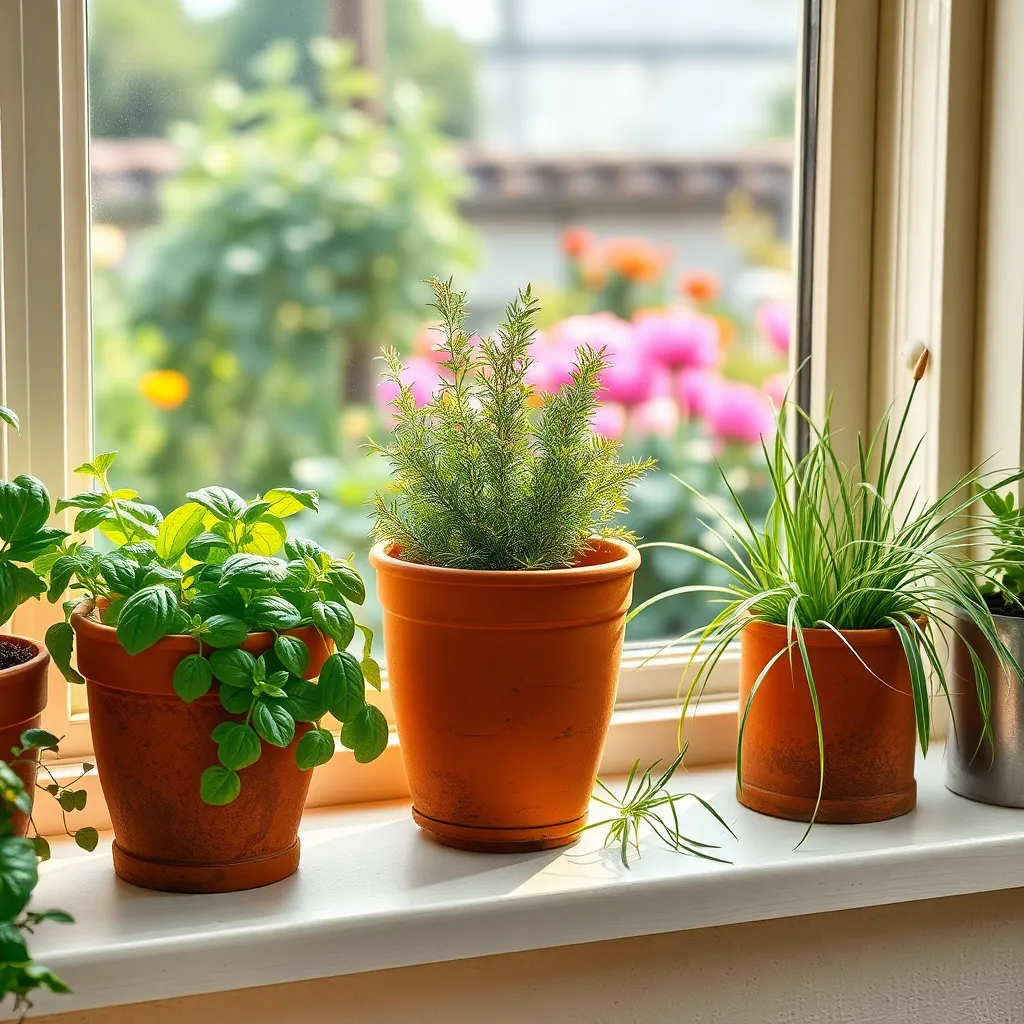
To thrive, herbs need plenty of sunlight, ideally around six to eight hours a day. Position your windowsill garden on a south-facing window for optimal light exposure, which is typically the sunniest side in most homes.
For those with limited natural light, consider using *grow lights* to supplement your herbs’ light needs. Modern LED grow lights are energy-efficient and can be placed directly above your plants, mimicking natural sunlight.
Monitor your herbs regularly to ensure they aren’t becoming leggy, a sign that they’re stretching for more light. If this happens, rotate the pots every few days, which helps the plants receive even light distribution and encourages balanced growth.
Advanced gardeners might experiment with reflective materials like foil or mirrors placed behind the plants. These materials can help bounce additional light onto your herbs, maximizing the available sunlight and fostering healthier plant development.
Water Herbs Consistently
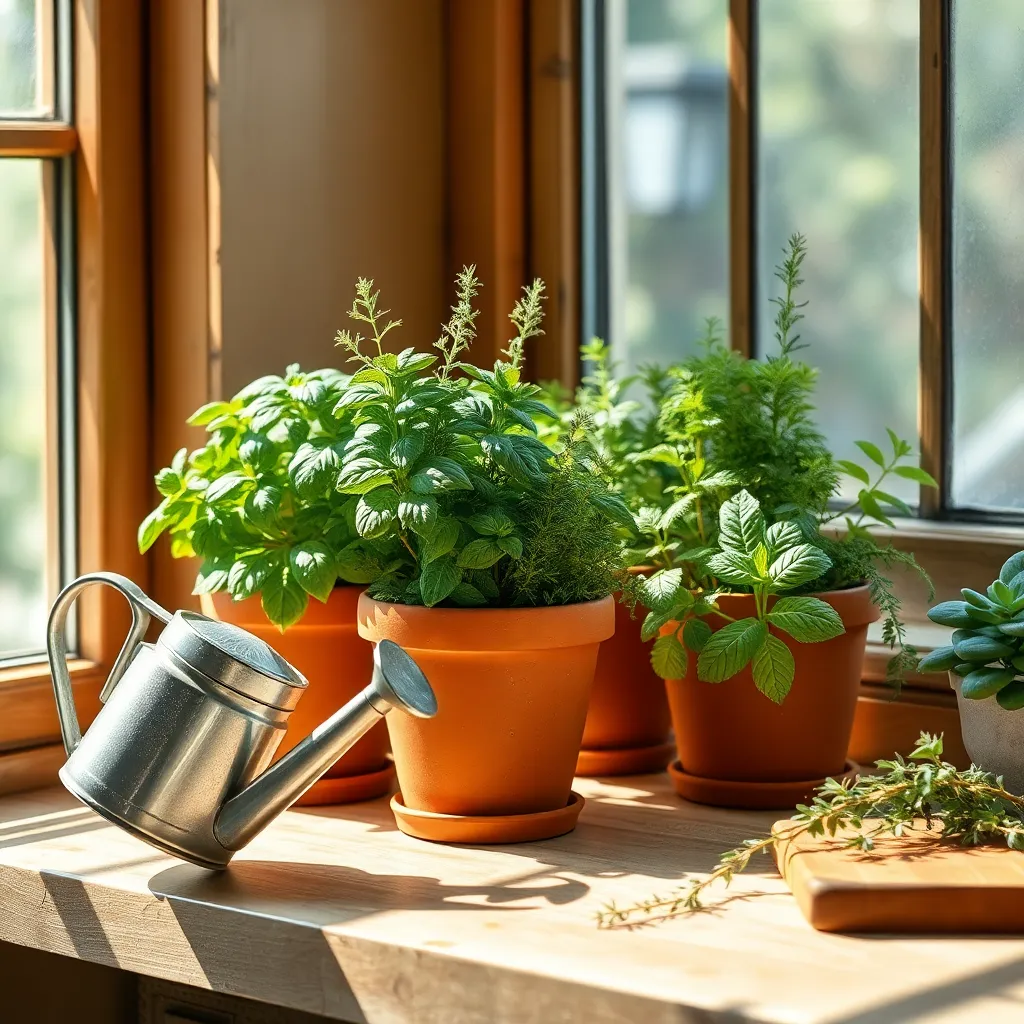
Watering herbs consistently is crucial for their healthy growth on your windowsill. Aim to keep the soil slightly moist but not waterlogged, as herbs generally prefer a well-drained environment.
To maintain the right moisture level, consider using a potting mix that contains perlite or sand to enhance drainage. Water your herbs when the top inch of soil feels dry to the touch, which is usually every 3 to 5 days depending on your home’s humidity and temperature.
For beginners, a simple finger test can help determine when it’s time to water: insert your finger into the soil up to the first knuckle. If the soil feels dry at that depth, it’s time to water.
Experienced gardeners might opt for a moisture meter to get precise readings, ensuring optimal hydration levels. Avoid letting your herbs sit in standing water, which can lead to root rot and other issues.
Using self-watering pots can be a great solution for those who travel or forget to water regularly. These pots provide consistent moisture without the risk of overwatering.
Prune Regularly for Growth
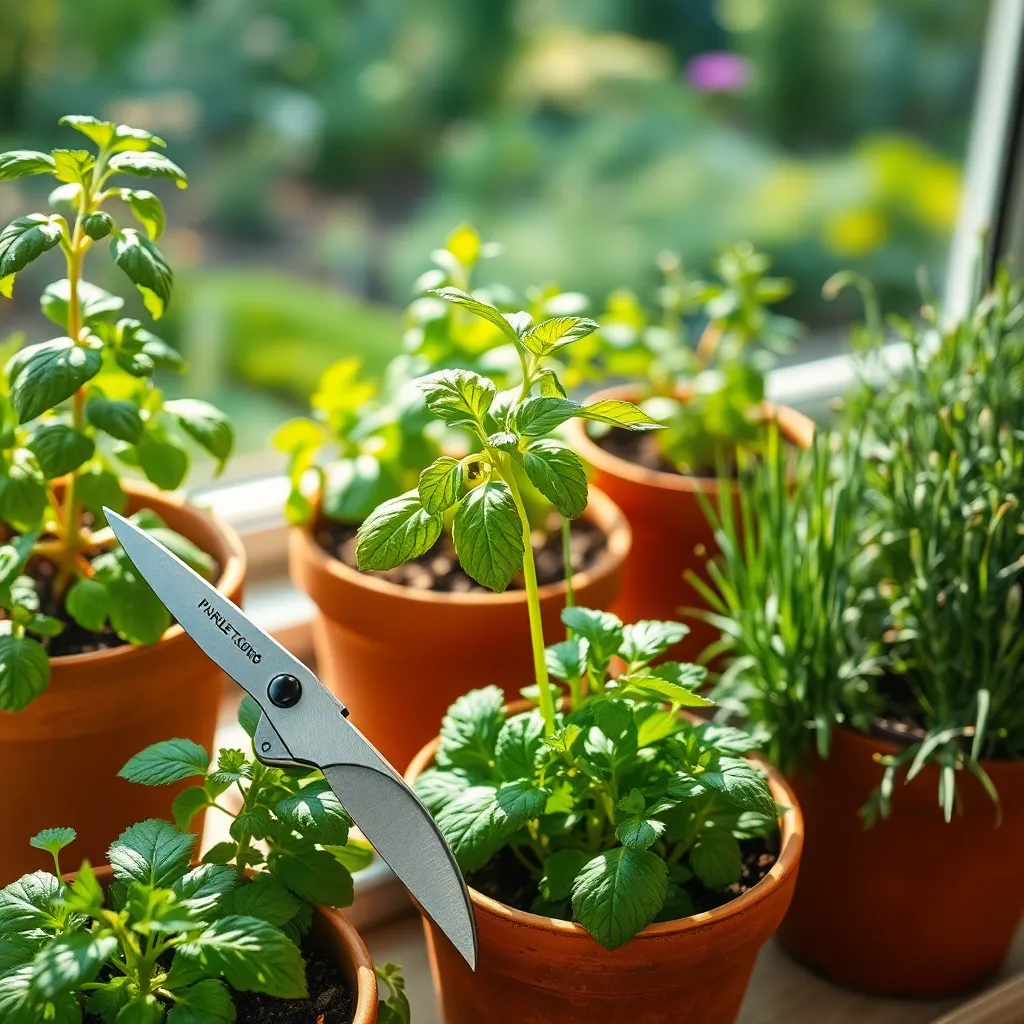
Pruning is essential for maintaining the health and productivity of your windowsill herb garden. Regularly trimming your herbs encourages bushier growth and prevents them from becoming leggy or overgrown.
Begin by identifying any dead or yellowing leaves and gently snip them off with sharp scissors or pruning shears. This not only tidies up the plant but also allows more light to reach the healthy parts, promoting vigorous growth.
For herbs like basil and mint, pinch off the top leaves just above a leaf node to encourage branching. This technique will result in a fuller plant, as the removal of the top growth signals the plant to produce more side shoots.
Advanced gardeners can try succession pruning by cutting back a third of the plant at a time, which keeps the herb continuously producing fresh leaves. Ensure your tools are clean to avoid any disease transmission between plants, which is crucial for indoor gardening spaces.
Conclusion: Growing Success with These Plants
As we conclude our exploration of ‘How to Grow Herbs in a Windowsill Garden,’ let’s reflect on the key relationship concepts we’ve unearthed. First, nurturing involves consistent care and attention, much like tending to a thriving herb garden. Second, growth requires patience, allowing relationships to flourish naturally over time. Third, diversity, akin to cultivating various herbs, enriches our connections, bringing unique flavors and experiences. Fourth, adaptation is crucial; just as plants adjust to their environment, so should we in our relationships. Lastly, communication is the sunlight that helps our bonds grow resilient and strong.
To plant the seeds of these concepts into your daily interactions, start with an intentional conversation today—whether it’s expressing gratitude or simply checking in with a loved one. This immediate action can begin nurturing the depth and strength you desire.
Remember, relationships, like gardens, thrive with regular attention and care. Bookmark this article now as a handy guide for future nurturing moments. As you cultivate these insights, envision a future where your relationships are as robust and enduring as a well-tended herb garden. Embrace this journey with warmth and optimism, knowing that each step you take strengthens the bonds that matter most.

